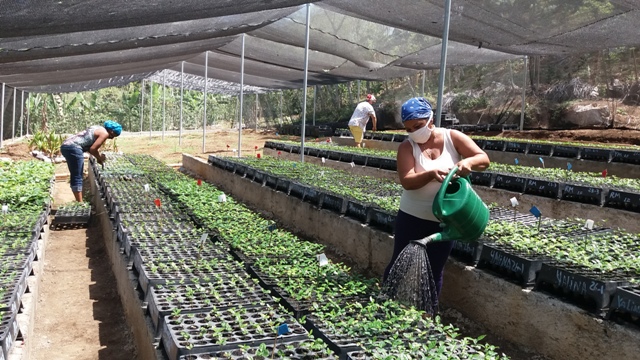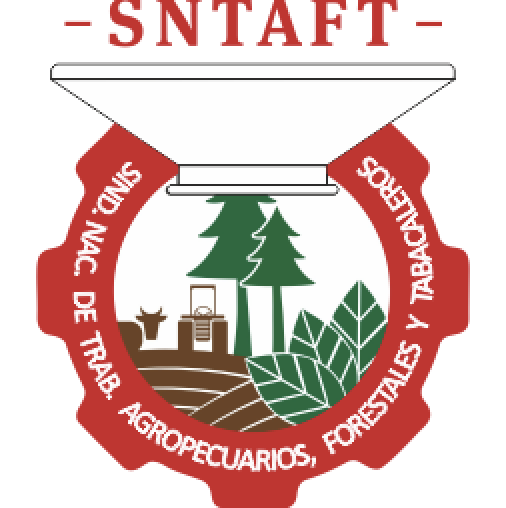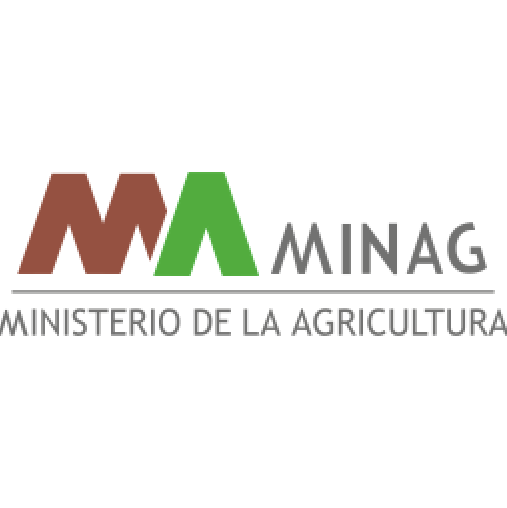GAF
UBPC La Calabaza: A new school in the mountains
The Basic Unit of Cooperative Production (UBPC) La Calabaza, located in the municipality of Segundo Frente, stands as a standard bearer in the application of science and technique for its work as a school structure, which allows progress in practice of the importance of the graft of the coffee tree to favor the development and quality of the crop.
A cataloged experience of National Reference, where a teaching unit of the Universidad de Oriente works, for the realization of the labor practices of the students of the Agronomy career, and which welcomes the Café Escuela project, also allows training a group of residents for the acquisition of skills associated with the productivity of the grain, among them the cutting technique, which increases the yield of coffee, by not degenerating the resulting plant and allows to achieve a first harvest in just two years, more resistant to pests and frequent droughts.
There, the international project CAFESCUELA is consolidated, which stimulates the promotion of coffee production in the provinces of Santiago de Cuba, Sancti Spíritus, Cienfuegos and Villa Clara, with the participation of donors from the Italian company LAVAZZA, the Non-Governmental Organization ( NGO) OXFAM and the Ministry of Agriculture (MINAG), among other institutions.
María Esther Padilla Rodríguez, president of the UBPC, stresses that the main objective of the program is to strengthen productive capacity by grafting the coffee tree, training and empowering human resources, including producers and extension agents, with the objective of consolidating the gradual progress of the Coffee Development Program, scheduled until 2030.
In “La Calabaza”, this fact is linked to the need to create the first Vegetative Propagation Center in the country to produce highly productive postures by two methods of genetic improvement -the grafting and the cutting technique- before the challenge imposed by the coffee transformation.
The grafting technique consists of using the Robusta variety and various types of the Arabica plantations as a pattern, among these, Bourbon and Mondo Novo, to obtain more vigorous and large-grain positions, resistant to pests and diseases, which guarantees better agricultural yields and good productive results at different times of the year.
In the UBPC of the mountainous area, similar levels of survival are reached to those recorded in the experimental stations in the country; Through these sites, the rehabilitation and renovation of the aging areas is promoted, which have in the expert and safe hands of eight cooperative women the task of continuing the process, which allows grafts to opt for the stems with better conditions and convert them in stakes, which are taken for two and a half months to the capping house.
According to the specialist, the novel technique admits from that moment its transfer to the sachets where they will be developed as postures until reaching 5 or 6 pairs of leaves to be sent to the planting areas. This method is known for technology transfer, with very good productive results. "La Calabaza", with a total area of ??81.87 hectares (ha of coffee, of these 60 in production, stands as a producing unit of the Second Front, which confirms the commitment to produce some 60,000 positions this year , which will be used in their areas, while an estimated figure is marketed with the different production structures and individual producers in the mountainous region.
The President of the UBPC states that for this campaign they aspire to collect more than 18,000 coffee cans, a figure that is very much in line with the Development Program and that puts the production structure in a position to far exceed its expected potential by 2030.
A training classroom with highly qualified professionals guarantee the preparation of cooperatives, producers and university students who carry out their teaching practices for a week.
COVID-19, became a challenge for the group, which from the first moment adopted the targeted sanitary measures without the report of infections and the victorious transit towards the second phase, said María Esther Padilla Rodríguez, who highlighted the significant contribution of the cooperatives to the production of food for the people.
The polyculture, the intercrop of fruit trees, banana fruit and donkey, as well as the sowing of short cycle crops, have allowed the delivery to Acopio of an average of 5 tons (tons) of food for commercialization. The raising of birds and some 330 pigs, consolidate the base towards self-sufficiency in these historical mountains, where its inhabitants live not only on coffee.




